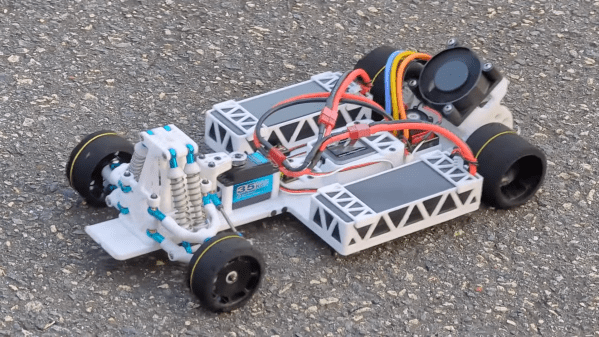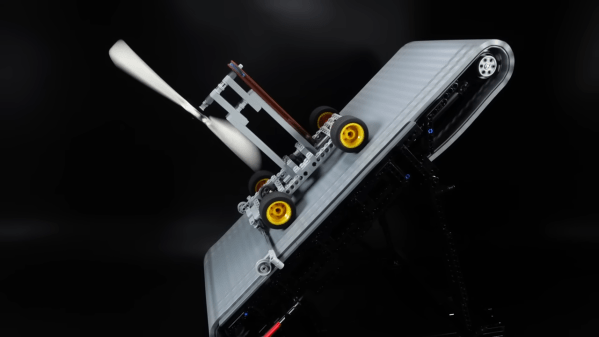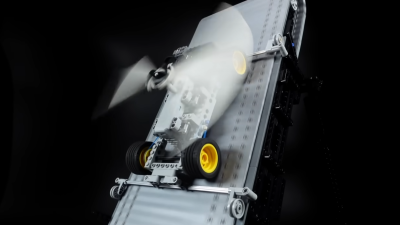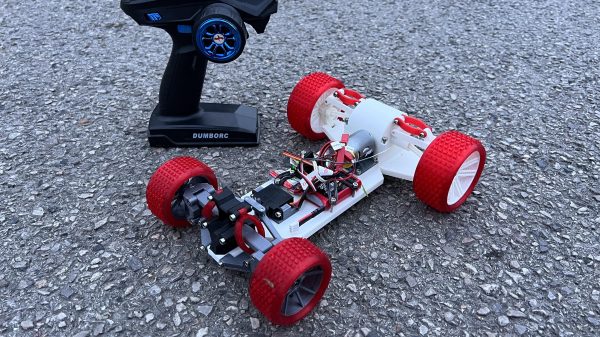You can always go out and buy an RC car off the shelf. However, it’s readily achievable to print your own design that has many of the features of off-the-shelf models, as demonstrated by [Jinan].
[Jinan] set about creating a rear-wheel-drive design with a low center of gravity for good handling. Two large 5.2 Ah batteries slung low in the chassis help keep the car planted when cornering. [Jinan] also developed a double-wishbone suspension setup up front to handle bumps with ease.
With his eyes on top speed, [Jinan] needed a drivetrain that could handle sustained high RPM operation without failure. During the development process, [Jinan] spent plenty of time learning about the mathematics behind gear shapes before relying on a built-in CAD generator to do the job for him. Armed with proper gearing, he focused on making sure the driveshafts and other links wouldn’t fail at speed.
[Jinan] doesn’t shy away from diving into the engineering of his design, analyzing failures and improving on his designs along the way. It’s no surprise his design was able to reach 66 km/h (41 MPH) after his rigorous development process. It’s compelling watching, and a great way to learn something.



















